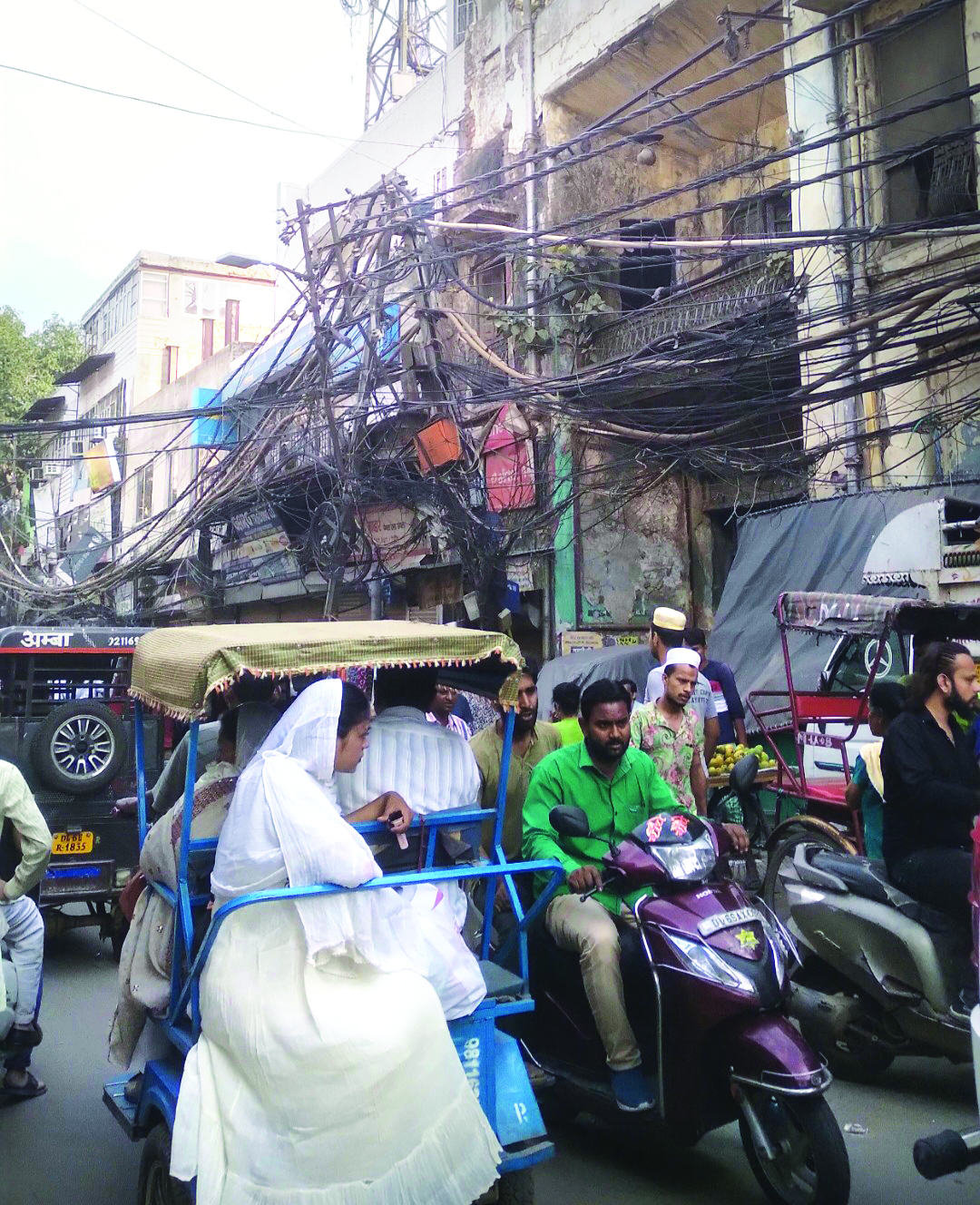Encroachments, poor roads, power cuts...

NEW DELHI: “Ghalib ki gali, Ghalib ka ghar, toh kya Ghalib ke zamane mein hi bhul gaye hume?” lamented Afsar, whose family has lived in Ballimaran for five generations. His words reflect the deep-seated frustration of residents over the lack of basic infrastructure development in this historic constituency of Delhi.
Ballimaran, a part of the Chandni Chowk Lok Sabha constituency, has long been a political stronghold, first for the Congress and later for the Aam Aadmi Party (AAP). Once represented by Congress veteran Haroon Yusuf, the seat was wrested away by AAP’s Imran Hussain in 2015, who won again in 2020 with an even greater margin.
As the 2025 Delhi Assembly elections approach, the contest remains largely unchanged, with Hussain seeking a third term against Yusuf from Congress, while the BJP has fielded a new candidate, Kamal Bagri, in a bid to establish a foothold.
Narrow Lanes, Encroached Spaces, and Failing Infrastructure
Ballimaran’s evolution into a wholesale commercial hub has come at a significant cost. The narrow alleys are crammed with shops, godowns, and an overwhelming number of hawkers.
Commercial vehicles for loading and unloading goods add to the congestion, often violating official regulations. “There are more hawkers than shops, and they have encroached everwhere,” said Faiza, a long-time resident.
Infrastructure, residents say, has been a persistent issue. “The hardships here are so frustrating. We reached out to the MLA, but the condition is as is right in front of your eyes,” said Deepak Kumar, whose family shifted out due to deteriorating civic amenities, though he still owns a house in the area. Pointing at a road that was supposed to be revamped, he noted how it remains plagued by overflowing drains and potholes.
Beyond encroachment and poor road conditions, Ballimaran struggles with erratic power supply, dangerously low-hanging electrical wires, and stray cattle disrupting movement. Poor sanitation adds to the chaos, with garbage heaps and clogged drains dotting the streets.
“Maybe this is how they want to protect the heritage of Purani Dilli,” shop owner Rahim remarked ironically. “They want us to experience the Ghalib era. But maybe he at least had access to clean water.”
‘What Are the Options?’
Despite widespread discontent, voters in Ballimaran seem resigned to their fate. While AAP’s Imran Hussain has enjoyed a commanding vote share—59.7 per cent in 2015 and 69.6 per cent in 2020—the opposition has struggled. The BJP has remained around 30 per cent, while the Congress, once dominant, saw its vote share plummet from 42 per cent in 2008 to just 4 per cent in 2020.
Ballimaran’s electorate is nearly 50 per cent Muslim, a factor that has historically influenced voting patterns. Many residents feel they lack viable alternatives.
“What are the options? This is the fate of Ballimaran’s citizens,” Kumar remarked, when asked if civic failures would impact his vote. Rahim echoed similar sentiments. “We will ask Hussain ji what are his plans before the third term—if we catch sight of him.”
With elections set for February 5, the contest in Ballimaran remains a test for AAP’s governance record and BJP’s attempts to woo the electorate. For Congress, which once dominated the constituency, regaining ground appears to be an uphill battle.While the ruling AAP has consistently secured the mandate, the voices on Ballimaran’s streets reflect growing frustration.
With deteriorating infrastructure, water shortages, and rising crime, residents want solutions. Yet, despite their grievances, most seem prepared to stay with AAP, not because of strong approval, but due to the absence of a credible alternative.



